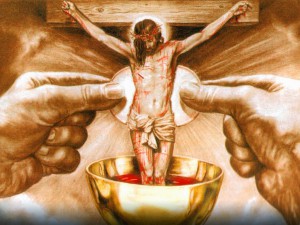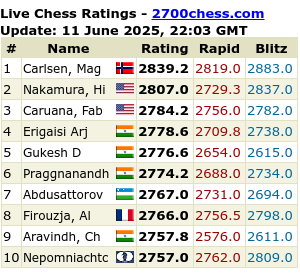 The trend over the last few years, from “high atop the thing”, has been to distance Cult, Code and Creed (worship, discipline and doctrine) from anything that happened before 11 October 1962. Marked for special treatment is whatever came out of the Council of Trent (namely clarity in our Cult, Code and Creed). They are forcing, imposing, pressuring, constraining that the Second Vatican Council be the interpretive lens through which the entirety of the Church’s history, and her Cult, Code and Creed, be reinterpreted. That’s the goal. Hence the constant undermining of the magisterial teaching of St. John Paul II and the savage attacks on anything associated with Trent.
The trend over the last few years, from “high atop the thing”, has been to distance Cult, Code and Creed (worship, discipline and doctrine) from anything that happened before 11 October 1962. Marked for special treatment is whatever came out of the Council of Trent (namely clarity in our Cult, Code and Creed). They are forcing, imposing, pressuring, constraining that the Second Vatican Council be the interpretive lens through which the entirety of the Church’s history, and her Cult, Code and Creed, be reinterpreted. That’s the goal. Hence the constant undermining of the magisterial teaching of St. John Paul II and the savage attacks on anything associated with Trent.
On the Feast of Corpus Christi let’s have a taste from St. John Paul’s 2003 encyclical letter Ecclesia de Eucharistia:
9. The Eucharist, as Christ’s saving presence in the community of the faithful and its spiritual food, is the most precious possession which the Church can have in her journey through history. This explains the lively concern which she has always shown for the Eucharistic mystery, a concern which finds authoritative expression in the work of the Councils and the Popes. How can we not admire the doctrinal expositions of the Decrees on the Most Holy Eucharist and on the Holy Sacrifice of the Mass promulgated by the Council of Trent? For centuries those Decrees guided theology and catechesis, and they are still a dogmatic reference-point for the continual renewal and growth of God’s People in faith and in love for the Eucharist. In times closer to our own, three Encyclical Letters should be mentioned: the Encyclical Mirae Caritatis of Leo XIII (28 May 1902), the Encyclical Mediator Dei of Pius XII (20 November 1947) and the Encyclical Mysterium Fidei of Paul VI (3 September 1965).
The Second Vatican Council, while not issuing a specific document on the Eucharistic mystery, considered its various aspects throughout its documents, especially the Dogmatic Constitution on the Church Lumen Gentium and the Constitution on the Sacred Liturgy Sacrosanctum Concilium.
If you, as many do, want to uphold and even emphasize the Second Vatican Council, it isn’t necessary to cut it off from everything that went before. If you, as many do, want even to turn a blind eye to pointed and important questions that have been raised about the Council’s documents, it isn’t necessary to ignore the past. It is possible to embrace a continuity between all the Councils rather than impose, as some influencers are now doing, a “hermeneutic of discontinuity and rupture”. (Oh, how they despise poor Pope Benedict XVI, who put his finger directly on the Rahnerian wound in that 2005 Christmas address.)




























What many, likely most, of these people seem to lack any comprehension of is that Trent was convened for the foremost purpose of putting an end to what are now called culture wars, and in any case institute a permanent, Catholic, Orthodox, and Apostolic means of living together in Faith, Tolerance, Charity, and Peace.
Bergoglio is dragging the Church back into all of the most destructive quarrels of the 15th Century.
“They are forcing, imposing, pressuring, constraining that the Second Vatican Council be the interpretive lens through which the entirety of the Church’s history, and her Cult, Code and Creed, be reinterpreted.”
Not only that, it is their particular version of Vatican II, no doubt “guided by the Holy Spirit”. For example. as has been pointed out many times, much of what Sacrosanctum Concilium says about the liturgy (use of Latin etc.) is totally ignored.
Pingback: VVEDNESDAY EDITION – Big Pulpit